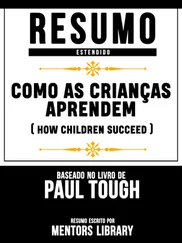Gary Evans, the Cornell scientist who tested the Simon-playing ability of the cohort of children in upstate New York he has been studying for almost two decades, conducted a similar experiment as Blair’s, though his subjects were in middle school. He collected three different kinds of data for each child: a cumulative-risk score that took into account everything from the ambient noise in a child’s home to the results of a questionnaire about family friction; an allostatic-load measure that incorporated blood pressure, the level of stress hormones in urine, and body mass index; and a rating of maternal responsiveness, which combined the child’s answers to a series of questions about his or her mother with a researcher’s observations of the mother and child playing Jenga together (another Hasbro game!). Evans found mostly what you’d expect: the higher the environmental-risk score, the higher the allostatic-load score— unless a child’s mother was particularly responsive to her child. If that was the case, the effect of all of those environmental stressors, from overcrowding to poverty to family turmoil, was almost entirely eliminated. If your mom was particularly sensitive to your emotional state during a game of Jenga, in other words, all the bad stuff you faced in life had little to no effect on your allostatic load.
When we consider the impact of parenting on children, we tend to think that the dramatic effects are going to appear at one end or the other of the parenting-quality spectrum. A child who is physically abused is going to fare far worse, we assume, than a child who is simply ignored or discouraged. And the child of a supermom who gets lots of extra tutoring and one-on-one support is going to do way better than an average well-loved child. But what Blair’s and Evans’s research suggests is that regular good parenting—being helpful and attentive during a game of Jenga—can make a profound difference for a child’s future prospects.
Some psychologists believe that the closest parallel to licking and grooming in humans can be found in a phenomenon called attachment. Attachment theory was developed in the 1950s and 1960s by a British psychoanalyst named John Bowlby and a researcher from the University of Toronto named Mary Ainsworth. At the time, the field of child development was dominated by behaviorists, who believed that children developed in a mechanical way, adapting their behavior according to the positive and negative reinforcement they experienced. Children’s emotional lives were not very deep, behaviorists believed; an infant’s apparent yearning for his mother was nothing more than an indication of his biological needs for nourishment and physical comfort. The dominant advice to parents in the 1950s, based on behavioral theory, was to avoid “spoiling” infants by picking them up or otherwise comforting them when they cried.
In a series of studies in the 1960s and early 1970s, Ainsworth showed that the effect of early nurturance was exactly the opposite of what the behaviorists expected. Babies whose parents responded readily and fully to their cries in the first months of life were, at one year, more independent and intrepid than babies whose parents had ignored their cries. In preschool, the pattern continued—the children whose parents had responded most sensitively to their emotional needs as infants were the most self-reliant. Warm, sensitive parental care, Ainsworth and Bowlby contended, created a “secure base” from which a child could explore the world.
Although psychologists in the 1960s had at their disposal many tests to evaluate the cognitive abilities of infants and children, they had no reliable way to measure a child’s emotional capacities. So Ainsworth invented a method to do just that, an unusual procedure called the Strange Situation. At Johns Hopkins University, in Baltimore, where Ainsworth was a professor, a mother would bring her twelve-month-old child into a lab set up as a playroom. After playing with her infant for a while, the mother left the room, sometimes leaving the child with a stranger, sometimes leaving him or her alone. After a brief interval, she would return. Ainsworth and her researchers observed the whole procedure through one-way mirrors, and then categorized the children’s reactions.
Most children greeted the returning mother happily, running to her and reconnecting with her, sometimes tearfully, sometimes with joy. These children Ainsworth labeled securely attached, and in subsequent experiments over the past few decades, psychologists have come to believe that they make up about 60 percent of American children. Children who did not have a warm reunion—pretending to ignore the mother when she returned; lashing out at her; falling to the floor in a heap—were labeled anxiously attached. Ainsworth found that a child’s reaction in the Strange Situation was directly related to his parents’ degree of responsiveness in that first year of life. Parents who were attuned to their child’s mood and responsive to his cues produced securely attached children; parenting that was detached or conflicted or hostile produced anxiously attached children. And early attachment, Ainsworth said, created psychological effects that could last a lifetime.
But Ainsworth’s contention that early attachment had long-term consequences was, at that point, just a theory. No one had figured out a reliable way to test it. And then in 1972, one of Ainsworth’s research assistants, Everett Waters, graduated from Johns Hopkins and entered the PhD program in child development at the University of Minnesota. There he met Alan Sroufe, a rising young star at the university’s Institute of Child Development. Sroufe was intrigued by what Waters told him about Ainsworth’s work, and he quickly embraced her ideas and her methods, setting up a lab with Waters where they could perform the Strange Situation test with mothers and children. Before long, the institute had become a leading center of attachment research.
Sroufe joined forces with Byron Egeland, a psychologist at the university who had received a grant from the federal government to conduct a long-term study on low-income mothers and their children. From the local public-health clinic in Minneapolis, they recruited 267 pregnant women, all about to become first-time mothers, all with incomes below the poverty line. Eighty percent of the mothers were white, two-thirds were unmarried, and half were teenagers. Egeland and Sroufe began tracking this group of children at birth, and they have been studying them ever since. (The subjects are now in their late thirties; both Egeland and Sroufe recently retired.) The evidence the study produced, which Egeland and Sroufe and two coauthors summarized most completely in their 2005 book The Development of the Person, stands as the fullest evaluation to date of the long-lasting effects of early parental relationships on a child’s development.
Attachment classification, the Minnesota researchers found, was not absolute destiny—sometimes attachment relationships changed in the course of childhood, and some children with anxious attachments went on to thrive. But for most children, attachment status at one year of age, as measured by the Strange Situation and other tests, was highly predictive of a wide range of outcomes later in life. Children with secure attachment early on were more socially competent throughout their lives: better able to engage with preschool peers, better able to form close friendships in middle childhood, better able to negotiate the complex dynamics of adolescent social networks.
In preschool, two-thirds of children in the Minnesota study who had been securely attached in infancy were categorized by their teachers as “effective” in terms of their behavior, meaning they were attentive and engaged and rarely acted out in class. Among children who had been observed to be anxiously attached a few years earlier, only one in eight was placed in the effective category; the large majority of those children were classified by their teachers as having one or more behavior problems. (The teachers didn’t know how the kids had done on the Strange Situation.) Children whose parents had been judged disengaged or emotionally unavailable in early assessments of their parenting style did the worst in preschool, and teachers recommended special education or grade retention for two-thirds of them. When teachers ranked students on indicators of dependency, 90 percent of the children with an anxious-attachment history fell in the more dependent half of the class, compared with just 12 percent of children with secure histories. When teachers and other children were surveyed, the anxiously attached children were more often labeled mean, antisocial, and immature.
Читать дальше



![Коринн МакКей - How to Succeed as a Freelance Translator [calibre 3.46.0]](/books/402693/korinn-makkej-how-to-succeed-as-a-freelance-transl-thumb.webp)








